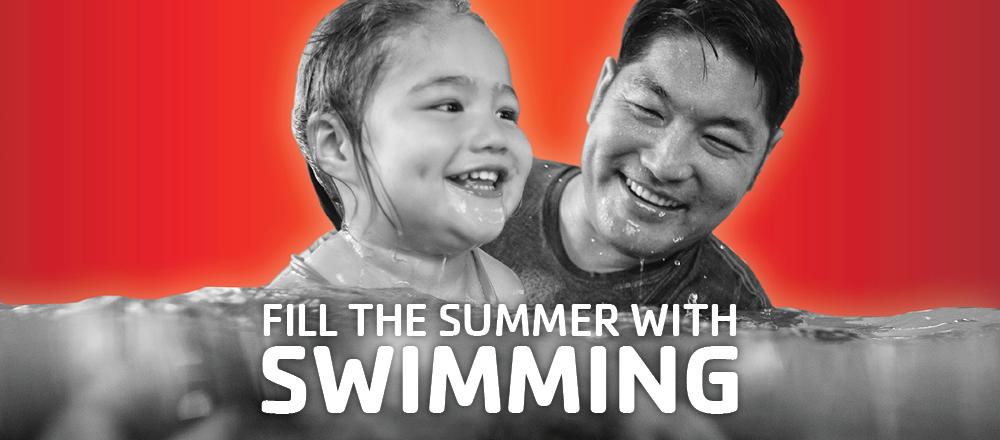
In a few weeks, schools will be out and swimming will be in! We know that families will be looking for ways to beat the heat this summer. Here’s our suggestion – fill the summer with swimming! While swimming is a fun and healthy activity to fill your time with, it is vitally important to stay vigilant in keeping your kids SAFE in and around water.
Fact: Drowning is the second leading cause of death for children ages 5-14, with two children dying every day because of drowning.
Fact: In 88% of drownings, an adult was present but that was not enough.
Fact: Drowning is preventable.
Swimming is a great way to keep kids active. With less structure in the summer, it can be tempting for kids to spend a lot of time in front of a TV. Swimming encourages kids to step away from screens and develop a healthy lifestyle at an early age. Learning to enjoy activities in and around the water nurtures social-emotional, cognitive and physical development. It is truly a sport you can do for life. After encouraging your children to step away from their screen, it is just as important to unplug yourself from screens.
The National Drowning Prevention Alliance coined the term "layers of protection" to classify strategies utilized to aid in preventing childhood drowning. The primary, and most important, layer of protection is constant supervision. There is no substitute for adult supervision. In the time it takes you to scroll through your news feed, run inside to answer the phone or flip the burgers on the grill, a child could drown. Never leave children alone while they’re swimming. Not even for a minute! Avoid all distractions while being a "water watcher." Reading a book or talking to friends is not considered constant supervision. With pool parties around the corner, it’s important to assign an adult in 15-minute intervals to be a water watcher. By implementing simple rules like this, you will save lives and make sure that everyone has the best summer ever.
Additional Aquatic Layers of Protection are:
- Barriers such as secure fencing, self-latching doors/gates, and safety covers when pools are not in use.
- Alarms may provide an immediate alert if a physical barrier is crossed.
- Outside phone to be used in case of an emergency.
Remember, if a physical barrier should be compromised or damaged, supervision is always the first and last line of defense against drowning.
Fact: Research shows that participation in formal water safety and swim lessons can reduce the risk of drowning among children 1 to 4 years of age.
YMCA Swim Lessons teach children of all ages and from all backgrounds that water should be fun, not feared, if you know how to stay safe in and around water. Each year, the Y teaches more than a million children invaluable water safety and swimming skills. Y Swim Lessons continue to evolve to better meet the needs of the people they serve. Swimmers first learn basic life-saving skills like Swim-Float-Swim and Jump-Push-Turn-Grab. These skills assist children to learn how to save themselves if falling into a body of water.
Did you also know May is National Water Safety Month! To read more Water Safety Tips, click here.